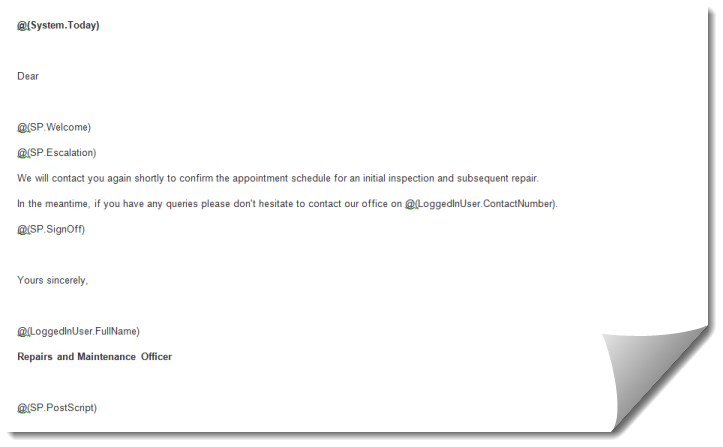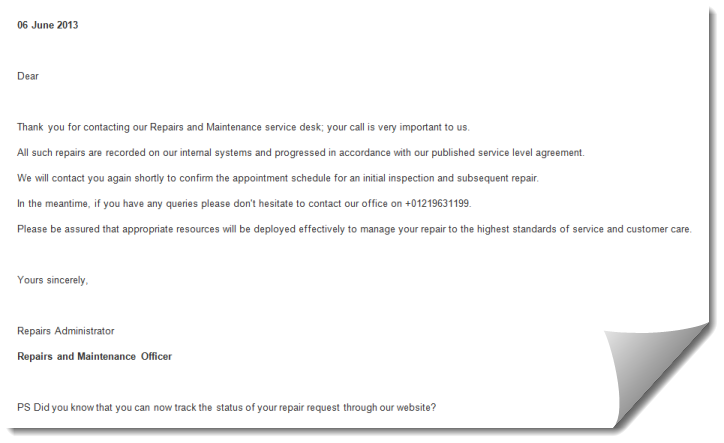A standard template is simply a master baseline document that serves as a starting point for a new document. Instead of creating from scratch similar communication templates over and over again, it is more efficient to create a single standard template, in the right format and style, holding body text and place holders (merge tags) that will be common to all communications. Thus, when an existing standard template is employed for a new communication, it will already be pre-formatted and much of the key information will be present, leaving only bespoke text and event-specific data fields to be added.
The use of standard templates ensures that letters, emails or text messages (SMS) are delivered in a consistent, personalised and corporate format. The process to create a standard template is very simple: firstly construct the text that will be the same for all related communication templates and then secondly, add place holders - also referred to as merge tags - which will be replaced with live data when the communication is compiled. There is no limit to the number of different standard templates that can be stored for the variety of communications a housing organisation will despatch.
Statement banks can also be maintained, containing paragraphs that will be used repeatedly in communication templates e.g a welcome, a sign-off, standard escalation procedures for complaint handling, etc. Once created, these paragraphs can be retrieved and inserted into many different communication templates, under the control of the end user. Each paragraph is available for selection within the communication template editor and also in MS Word, as a separate merge tag. The use of statement banks ensures that key messages are standardised.
An example standard template - a repair request acknowledgement - is shown in the graphic below, revealing how place holders for data items and paragraphs (denoted by the prefix 'SP') are used to good effect.

An example of the communication template preview is shown in the graphic below.

Separate help articles have been created for each key aspect of standard template and paragraph library management, including: